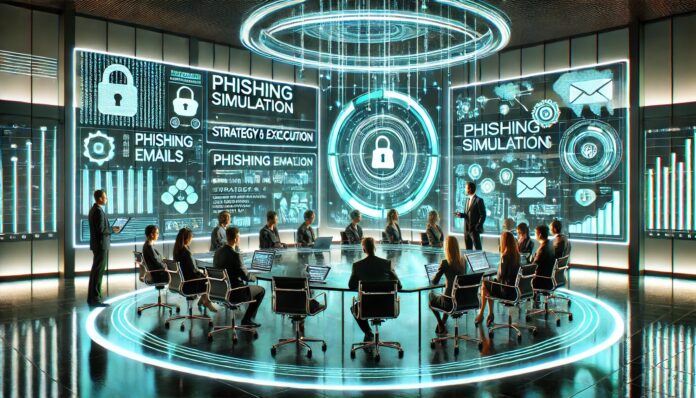
Human beings are without doubt the single biggest cybersecurity threat to organizations. About two-thirds of breaches stem from a simple, non-malicious user action such as an interaction with a phishing email. Users can also be an organization’s strongest security asset. Not only can human intuition and critical thinking prevent attackers from infiltrating, they also help detect an attacker’s presence post-compromise.
While cybersecurity training and awareness initiatives can lower human risk within organizations, conventional training methods may fall short, particularly when they are viewed as mere check-box exercises that provide only theoretical understanding. In contrast, phishing simulation training offers a more direct learning experience whereby security teams engage employees by testing them with real-life phishing schemes, allowing them to interact with security threats in a safe environment.
Phishing Simulation Training Strategy
Phishing simulation is crucial to any organization’s cybersecurity efforts for the following reasons:
1.It focuses on behavior over knowledge: While having security knowledge is good, its effectiveness is limited if individuals are unable to respond appropriately in real-life scenarios. Regular exposure to phishing attacks helps employees develop the instincts and reflexes necessary for proactive detection and reporting of cyber threats.
2.It identifies weaknesses: Certain employees may be more susceptible to phishing attacks than others. For example, about 6% of repeat clickers are responsible for about 30% of security failures. Identifying such people and offering them personalized coaching will be important in boosting human defenses. The repeat failing of phishing tests is a clear indicator that more help and practice are needed.
3.It helps measure human risk and exposure: It’s important to track and monitor the level of human risk and resilience in the organization. By analyzing phishing simulation trends over time, business leaders can gain insight into training effectiveness, security performance, susceptibility to phishing attacks, and the prevailing security culture. These insights can be used to establish measurable goals and identify behaviors that require attention.
How To Execute An Effective Phishing Simulation Program
Phishing simulation training isn’t a one-off exercise but a continuous process of education, assessment, and adaptation. Let’s explore the main steps involved in establishing an effective phishing simulation program.
Identify Your Current State: Prior to implementing your program, identify current security behaviors among employees and their social engineering susceptibility. These insights will serve as the foundation of your program. Run employee surveys, track results of phishing emails over time (for example, how many phishing emails are reported on average), and analyze user behavior data from security tools.
Set Measurable Goals: Once base-line data is drawn and priorities are identified, set some clear goals and develop an action plan to achieve those goals. Goals can be things like – a reduction in phish-prone percentage by X%, a reduction in phishing attacks by Y% and an increase in the number of phishing attempts being reported by Z%.
Segment Your Audience: As mentioned earlier, some employees may be more gullible to phishing and social engineering scams than others. Some departments might be at a higher risk of online scams (for example: customer support or finance departments). It’s important to segment such audiences so that security teams can monitor their progress and offer a more tailored approach with training.
Develop Authentic Scenarios: Phishing attacks must be as realistic and as relevant as possible. Mimic well-known brands and domains, design tailored campaigns to address specific audiences and real-world scenarios. Examples include an MFA fatigue attack, scenarios like business email compromise (BEC) and vendor email compromise; smishing and vishing attacks.
Deploy Simulations In A Phased Manner: Rather than running simulations on your entire employee base, try rolling out campaigns in a phased approach. That way, training administrators can get a better handle on their audience (i.e., their level of security maturity), allowing them the opportunity to refine their approach and content as they see fit.
Share Results with Employees: By sharing feedback post simulation, one can reinforce learnings and best practices. Be supportive and empathetic towards individuals that failed the test. The objective of phishing simulation is to make users/employees feel empowered and confident about practicing security, not to demotivate or reprimand.
Keep Refining And Fine-Tuning: Once you have gained some experience in running simulation campaigns, it’s important to get an understanding of what is working and what is not working, which audiences and departments are vulnerable, who needs more hands-on training, etc. It’s also important to refine simulations based on the evolving threat and business landscape.
To summarize, phishing simulation must not be viewed as a tool but a core ingredient of cybersecurity strategy. With the right approach and commitment to phishing simulation training, organizations can significantly minimize human error, foster a healthy cybersecurity culture and architect a more resilient organization over time.






















